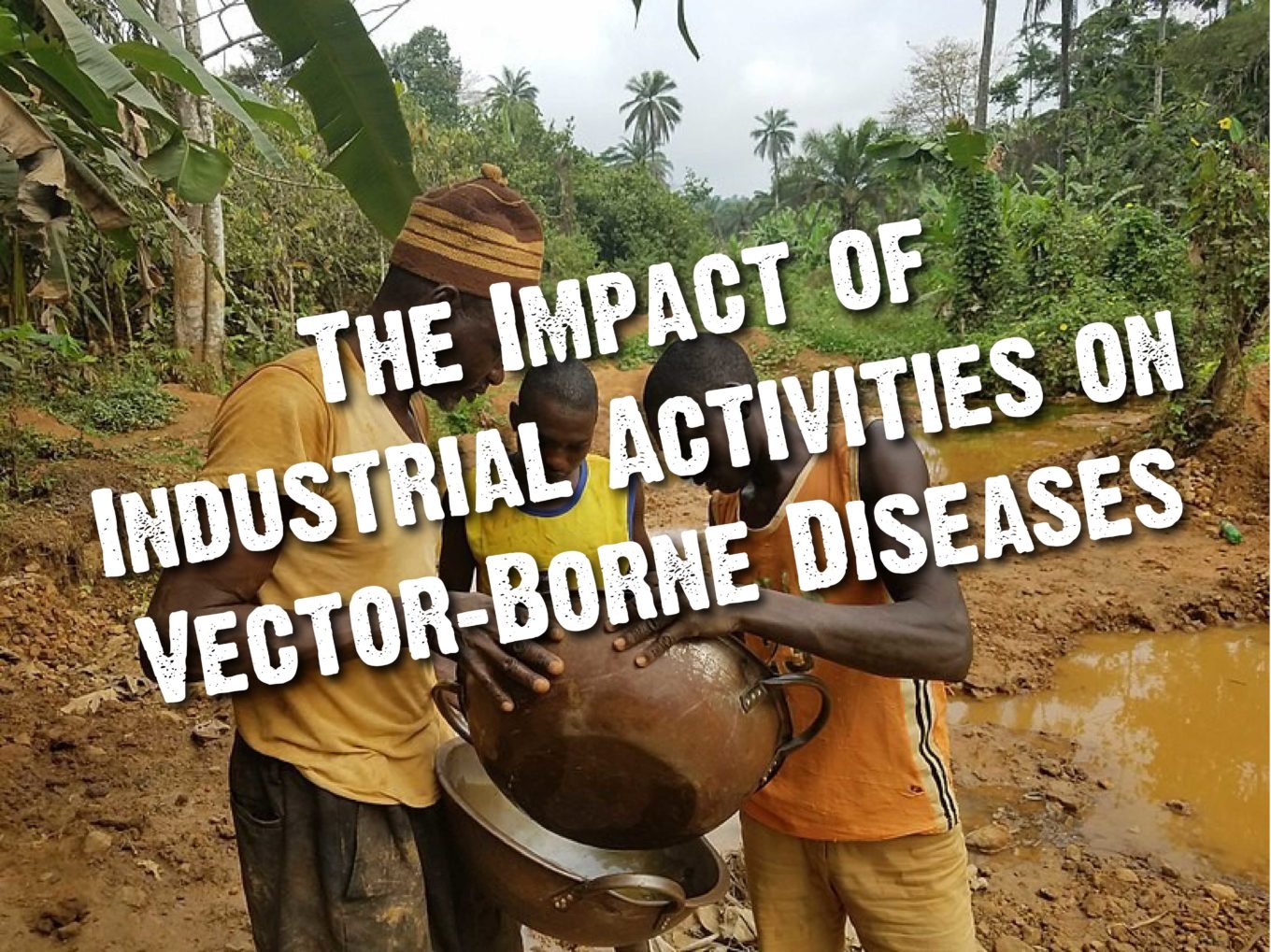
September 14th, 2018
The Impact of Industrial Activities on Vector-Borne Diseases
By Dr Robert Jones – Study Manager; Academic and International Development Lead, ARCTEC
Many tropical and sub-tropical regions of the world are both rich in natural resources and have suitable environmental conditions for the transmission of insect-borne diseases such as malaria or dengue fever. Those working in large agricultural schemes, logging, mining, and the oil industry in these regions are therefore at risk of infection.
Scientists at Arctec, in partnership with collaborators in Europe, Africa, North America, and Asia, have recently published a review of the impact of industrial activities on vector-borne disease trasmission1. The work, commissioned by TDR, the Special Programme for Research and Training in Tropical Diseases, highlights the changes to the natural environment that these activities create, as well as the demographic factors that increase contact between susceptible individuals and the mosquitoes that transmit diseases.
The environmental factors include the generation of pits when material is extracted, which can fill with water and become suitable breeding sites for mosquitoes. In addition, larger scale operations require the removal of trees to make way for access roads, maintenance and administrative facilities, and new residential settlements for the workforce. This can provide the more open, sunlit breeding sites preferred by some vectors of malaria, including Anopheles darlingi in South America, some members of the An. gambiae complex in Africa, and of the An. punctulatus group in the southwest Pacific2,3. Changes to the environment that favour one mosquito species over another can have important consequences for disease transmission and control: some species are more competent vectors than others, and different species can have different preferences for feeding inside or outside, during the evening or night-time, and even whether they take blood meals primarily from human or other animal sources4,5.
Together with changes in natural habitats, industrial activities are associated with other changes that increase contact between pathogens, vectors and humans. Industrial workers can spend long periods of time outside on the forest fringe fully exposed to mosquito bites. In South America it is common for workers to migrate from regions that are non-endemic for malaria to work sites where malaria is transmitted. For example, malaria cases in the Sifontes municipality of Bolivar State in Venezuela soared from around 21,000 cases in 2010 to over 52,000 in 2014 due to the growth of the mining population from other parts of the country6. These migrants are susceptible to severe malaria disease because they have no immunity, and they also often have little or inadequate knowledge about the disease and its prevention7.
Because of the migratory nature of industrial workforces, operating in the formal or informal sector, it becomes difficult to monitor infection through standard disease surveillance. The remoteness of some sites can make it difficult for individuals to be reached by traditional health care facilities, and in those cases where workers are illegal migrants they may try to avoid contact with government services9. There is also the risk that, upon returning to their place of origin, these workers will introduce infections within a naïve population8.
Where environmental changes, brought about by industrial projects, are coupled with demographic factors that expose large numbers of people to diseases, large outbreaks can result. Gaining a better understanding of the influence of human activities on vector-borne disease transmission will help guide future efforts to minimize the potential negative impacts of industrial development.
The full article is free to read via the following link until 28th October 2018: https://authors.elsevier.com/a/1Xhj-,2UvfBSf
References
- Jones et al., 2018. The impact of industrial activities on vector-borne disease transmission. Acta Trop. 2018 Aug 27. pii: S0001-706X(18)30429-7
- Sinka et al., 2010. The dominant Anopheles vectors of human malaria in Africa, Europe and the Middle East: occurrence data, distribution maps and bionomic précis. Parasit. Vectors. 4:89.
- Cooper et al., 2009. Malaria vectors of Papua New Guinea. Int. J. Parasitol. 39(13):1495-501.
- Pimnon and Bhumiratana, 2018. Adaptation of Anopheles vectors to anthropogenic malaria-associated rubber plantations and indoor residual spraying: establishing population dynamics and insecticide susceptibility. Can J Infect Dis Med Microbiol. 9853409.
- Beerntsen et al., 2000. Genetics of mosquito vector competence. Microbiol. Mol. Biol. Rev. 64(1):115-137.
- WHO, 2018. Health of refugees and migrants. Regional situation analysis, practices, experiences, lessons learned and ways forward. WHO Region of Americas. http://www.who.int/migrants/publications/PAHO-report.pdf
- Wangroongsarb et al., 2011. Respondent-driven sampling on the Thailand-Cambodia border. II. Knowledge, perception, practice and treatment-seeking behaviour of migrants in malaria endemic zones. Malar J. 9(10):117.
- Castellanos et al., 2016. Malaria in gold-mining areas in Colombia. Mem. Inst. Oswaldo Cruz. 111(1):59-66.
- Singhanetra-Renard, 1993. Malaria and mobility in Thailand. Soc. Sci. Med. 37(9): 1147-1154.